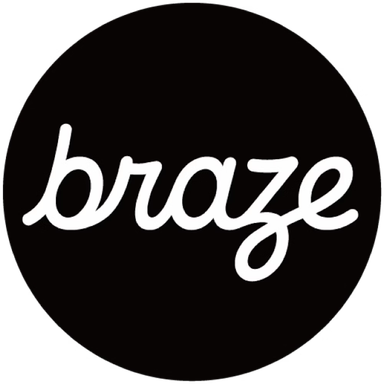What’s an In-Browser Message?
Published on March 31, 2020/Last edited on March 31, 2020/5 min read


Team Braze
Since the early days of the web, brands have been looking for ways to communicate effectively with their web audiences. Some of those efforts have been more successful than others—web pop-ups and interstitials gave marketers the ability to share a message with web visitors, but often did it in ways that were alienating instead of valuable—but over the past five years, we’ve see a new generation of web messaging coming into view, making this sort of engagement a real possibility for the first time.
But how marketers embrace that possibility matters. When mobile messaging first became a thing, marketers focused a lot of attention on mobile app push notifications—which, since they were a new way to reach users, made sense—but too often neglected to take advantage of in-app messages, which can do just as much to boost customer engagement. A similar thing has happened in the web messaging space. There’s been a lot of buzz around web push notifications, but not nearly as much attention given to their sister channel, in-browser messages.
What Are In-Browser Messages?
Think of them as the new-and-much-improved next generation of those web pop-ups and interstitials that still haunt your dreams. Unlike web pop-ups, today’s in-browser messages were designed in the image of mobile in-app messages, including support for complex message personalization and customer targeting, allowing them to provide relevant, valuable experiences for the web visitors receiving them.
In-browser messages—which can include simple one-line notifications or rich, full screen experiences—are designed to reach visitors when they’re active on your desktop and mobile website and can be sent without requiring users to opt-in for messages. These messages come in multiple formats, including:
- Slider: Small messages for brief need-to-know text messages
- Modal: Medium-sized pop-ups that can support imagery for medium-priority messages
- Full Screen: The most attention-grabbing and largest in-browser message that includes large visuals and text
- Email Capture: These custom messages make it easy for brands to nudge web visitors to share their email addresses for future outreach
- Custom HTML: With a little coding, in-browser messages can be highly customizable and interactive to fit all marketing messaging needs
What Are the Differences Between In-Browser Messages and Web Push Notifications?
Think of in-browser messages and web push as the web messaging versions of in-app messages and push notifications. Like in-app messages, in-browser messages are only viewable by people who are actively engaging with your brand’s website on mobile or on desktop. Web Push on the other hand, can reach customers as long as they have a browser open, even if they’re not on your site. However, like mobile push, they can only be sent to users who have agreed to enable them, potentially limiting their reach.
Both these channels can add a lot of value to your brand’s messaging mix, but it’s important to be mindful of their respective strengths and weaknesses in order to use both of them effectively.
What Are the Benefits of In-Browser Messages?
In-browser messages are a powerful tool that can encourage greater customer engagement, retention, and monetization. They make it possible to easily, consistently reach both loyal users and prospective customers on the web—and their support for message targeting and personalization allows marketers to leverage them to better engage those individuals based on their unique interest, needs, and behavioral patterns. In practice, that might look like a personalized campaign that offers new users a discount code to make a first purchase—but targets returning customers with a pitch to join your brand’s loyalty program.
Another nice thing about in-browser messages? They can be an effective way to get customers on board with receiving web push messages. By leveraging in-browser messages to “prime” visitors to enable web push, you’re expanding your messaging mix and making it easier to engage those to come back and re-engage.
How Can I Implement In-Browser Messages as Part of My Marketing Strategy?
In-browser messages are a great addition to your outreach campaign and inbound marketing strategy. The best in-browser messages offer a specific call-to-action (CTA) to get each targeted visitor to take a specific action on your website, such as making a purchase or signing up for a weekly email newsletter. (Once a visitor is on your email list, you can regularly reach out to them with new content, offers, or products.)
For example, imagine that you run an online skincare business selling a variety of lotions, creams, and face masks. In addition to your store, you also have a blog with a strong monthly readership, but you want to take your business to the next level and increase sales and customer engagement. In-browser messages can be used in a variety of ways to support this outcome. First, try creating a simple email subscription form message and use it to make a case for the value of your newsletter and other updates. Now that you have captured your visitor’s information, you can send targeted email newsletters and pair them with in-browser messages highlighting personalized content, special discount codes, and more, in order to deepen user engagement and drive future purchases.
The key is to think through the kinds of campaigns that are likely to appeal to your web audience and then use the segmentation and personalization tools supported by your brand’s chosen customer engagement platform to add value to these experiences, message by message and campaign by campaign.
Final Thoughts
Not every customer engagement solution supports web messaging, but if this key tool is available to you, it’s worth thinking through how to leverage it to bolster your overall marketing strategy.
Interested in learning more about web messaging? Check out our exclusive overview, Web Messaging: Beyond-the-App Engagement.
Related Tags
Releated Content
View the Blog
The new inbox reality: How iOS changes are reshaping email marketing

Aparna Prasad

Experience optimization: Turning data insights into better journeys

Team Braze

December 2025 Bonfire Marketer of the Month: Jagex’s Emma Oliver
